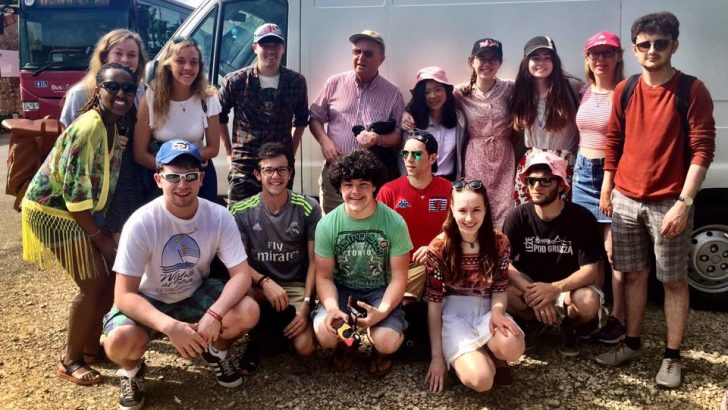A place of people, prayer and peace, the French monastic site at Taizé offers a spiritual retreat from an often hectic and growing secular world. Established in 1940 by Brother Roger, who founded it as a safe haven during WWII, Taizé has become one of the most popular pilgrimage sites in Europe, with over 100,000 people journeying to it each year.
Its attraction is due to its unique liturgical style and music which entail religious chants and meditative prayer; its commitment to a simple life of worship and communal sharing; and its embracive approach to all cultures and religious denominations. The youth, however, share a particular significance in the ongoing history of Taizé, and are called to travel to the ecumenical location in order to bring about peace and reconciliation in their homeland. Enticed by this setting, I ventured to Taizé for the third time this summer to once again encounter and experience a little piece of the sacred.
Travelling with a group of Trinity students, I arrived at Taizé on a warm Monday evening, and was greeted with feelings of nostalgia as I began to remember the rustic aura of the site. Most of the infrastructure has remained the same since 1960s, and the sleeping arrangements of either small, wooden dormitories or tents mirror this antiquated vibe. Yet, little time is spent resting, as the daily routine is rigorous, reflecting the Benedictine tradition Ora et Labora (Pray and Work).
Each morning, every person in the community attends Morning Prayer at 8:30am, and many then carry out work that has been assigned to them. The communal dimension of Taizé requires that all pilgrims help to sustain it through these various tasks such as making meals or setting up tents. Indeed, its self-sufficiency is such that the brothers of Taizé refuse to accept donations and instead garner finances from selling pottery and unique pieces of iconography made by the brothers themselves.
Duty
I was given the duty, with a group of international students, of washing the dishes and cutlery following the meals each day, which provided me with many opportunities to engage with people from different backgrounds. The mix of laughing, water fights and learning German words like butterfly (it’s ‘schmetterling’) reduced the chores to a fun pastime where new friendships were made.
Following work there is another prayer service, which involves all of the attendees singing, or in my case attempting to sing, together Psalms and prayers of different languages and religious tradition. Amid these chants there is a long period of silence where individuals can meditate, reflect or just appreciate a stillness that is often rare to find in the modern life.
Afterwards, Bible group introductions take place where a brother outlines some important messages from the Gospels, and how this affects each of us and society as whole today. One memorable teaching that the brother spoke of, in relation to a session on Matthew 20:20-28, was: “Impatience is violence against time.” This quote resonated with me and many others, who often feel pressurised by our fast-paced society.
Each day finishes in an area called the Oyak, where all of the pilgrims gather to speak and reflect about their journey in faith, as well as relax with snacks and alcoholic beverages (there’s a two cup limit!). This type of open dialogue with fellow believers was refreshing, especially from the perspective of a college student growing up in Ireland, who often sees religion being misunderstood, mocked or treated with hostility.
Taizé helped me to realise that my own social and religious background is only a tiny part of a bigger narrative, and that Christianity continues to play an influential role in millions of peoples’ lives throughout the world. As I result, I left Taizé reinvigorated and with a new found spiritual zeal, encouraged by the fact that the Christian message still speaks and people are still listening.
As my third time travelling to Taizé indicates, it is a place worth visiting for both the faithful and those questioning their faith. From personal experience, it seems that a lot of people of my generation, although having some type of animosity towards the Church, still identify as ‘spiritual’ or have a sense of ‘something being out there’ that is guiding humanity. I think the Taizé experience, above all, provides a safe platform where these types of ideas can be explored. It is not somewhere that forces theological truths down your throat, but a place of searchers and wanderers who are asking questions that the consumerist world can’t answer.


 Colm Fitzpatrick
Colm Fitzpatrick The group of Trinity students who went to Taizé.
The group of Trinity students who went to Taizé. 